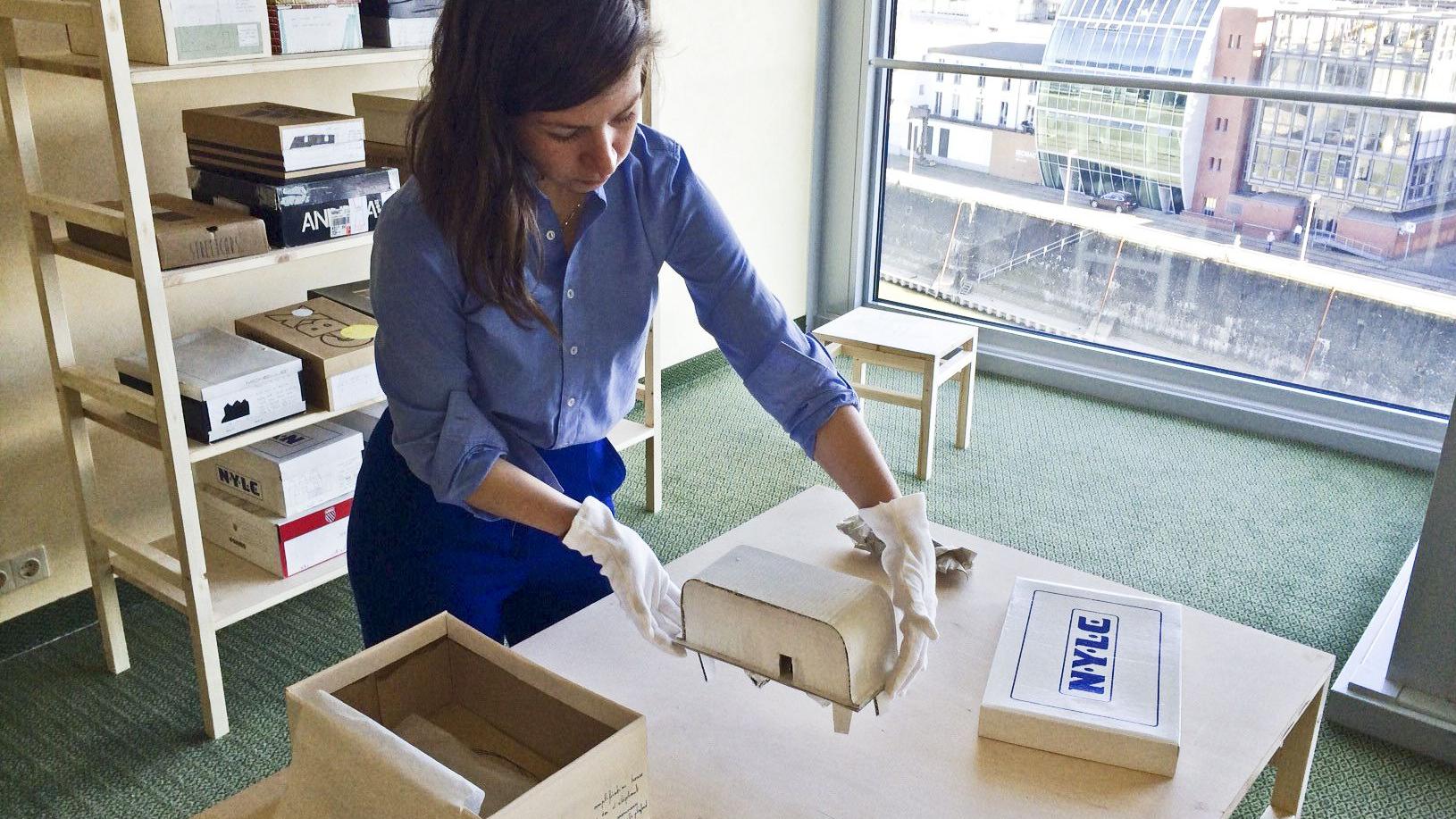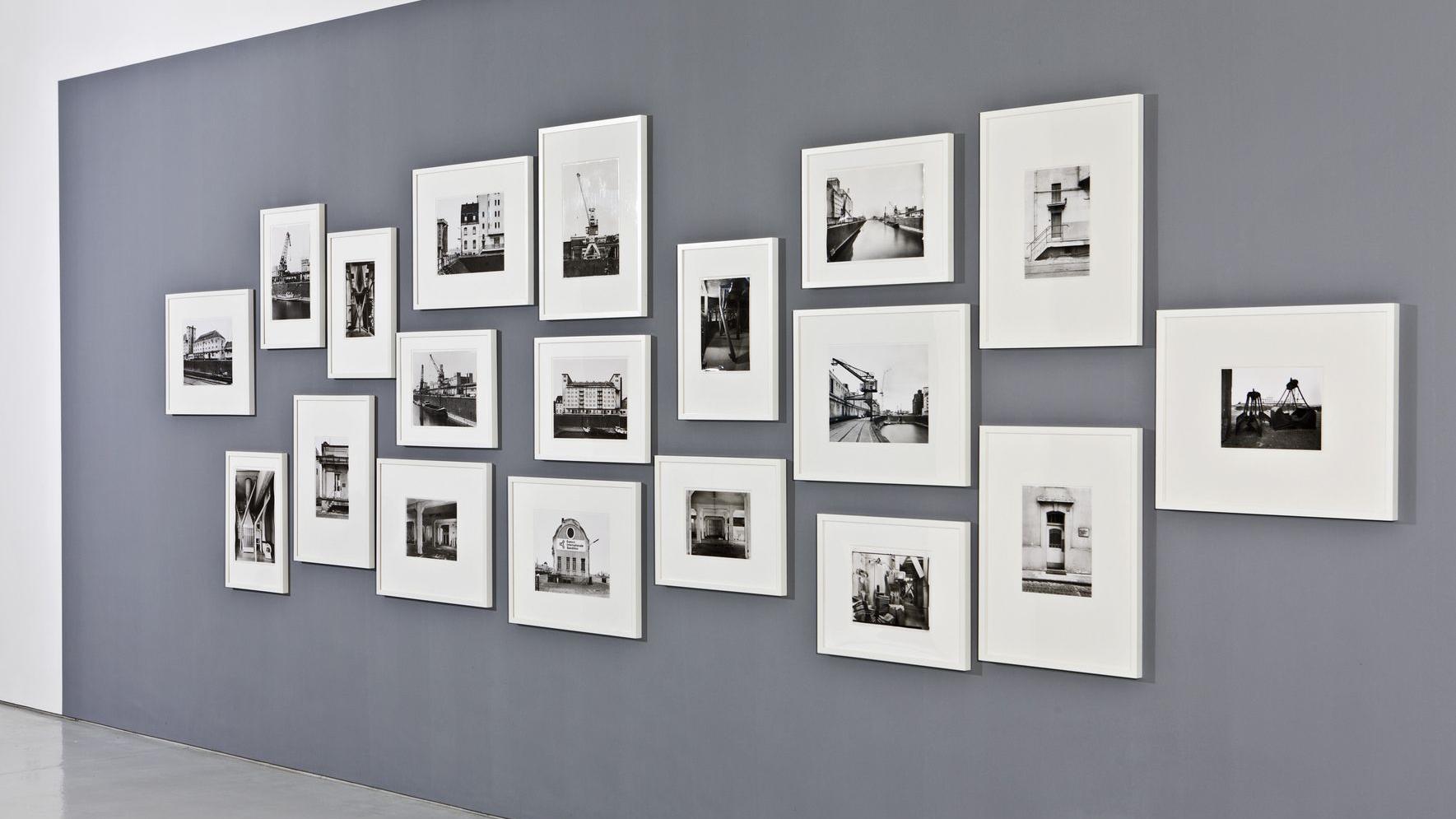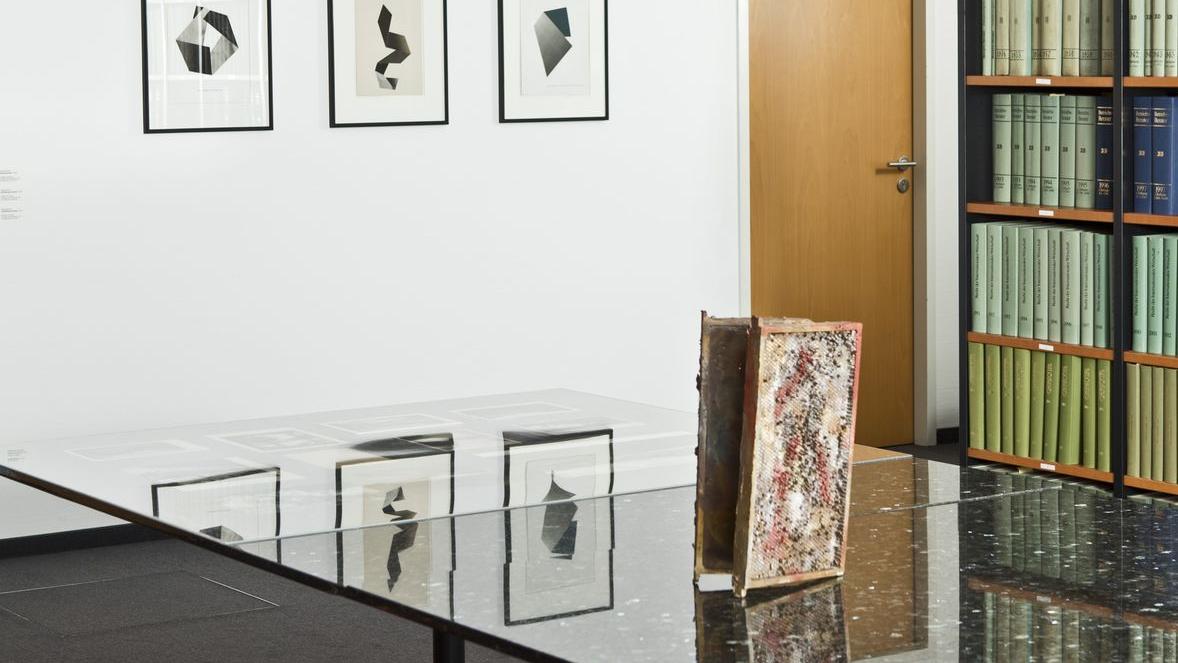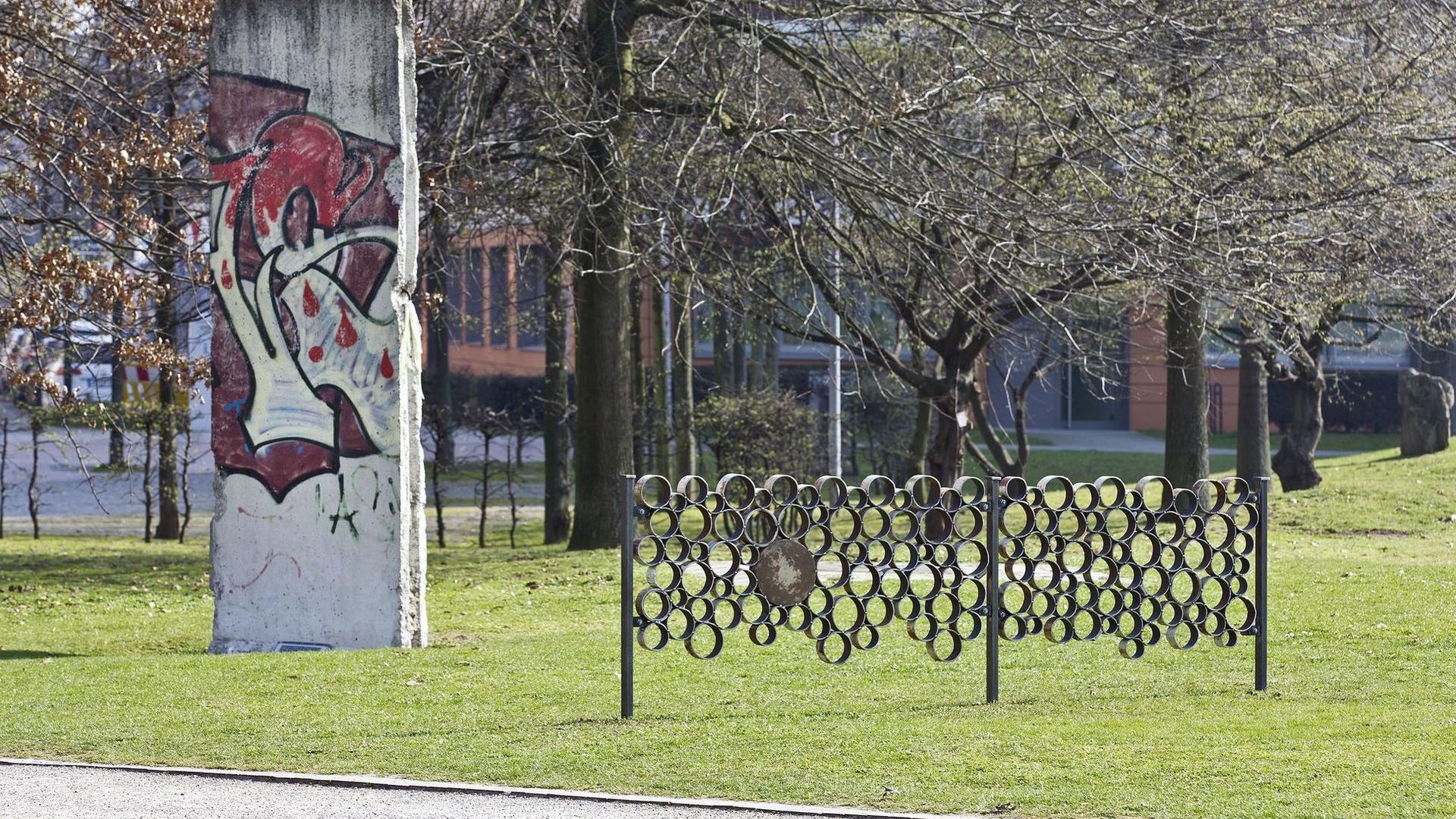Backdoor Fantasies
MICHAEL BEUTLER, JEAN-PASCAL FLAVIEN, LUDGER GERDES, JAN HOEFT, ANNA K.E., ISA MELSHEIMER, AERNOUT MIK, HANS PETER REUTER, TATA RONKHOLZ, KATJA STRUNZ, GÜNTER WESELER, CHRISTOF ZWIENER
April 5, to August 10, 2014
Curators: Julia Höner and Ludwig Seyfarth
Backdoor Fantasies features art marked by the desire for new beginnings, experimentation, and transformation. It also encompasses utopian ideas, but not a static vision of a supposedly better world or a global catastrophe. Artists often look with ambivalence toward the future, peering behind façades and mistrusting grandiose promises. They can also regard technological and urban changes in the same way. In contrast to concepts with pointedly defined goals, like rationalized urban planning projects, transformation in art is an open-ended process that allows room for individual projections and fantasies.
Dusseldorf’s Media Harbour is the reference point for the exhibition Backdoor Fantasies. Beginning in the 1960s, urban development and new landmark architecture catapulted the old docklands into the next century. This ambitious urban renewal project represented the start of a prosperous future. Five decades later it is time to ask what remains of the urban and workplace utopias envisioned then. The exhibition takes place at KAI 10, but also leads the visitor to other spaces, both indoors and out. One of the project’s main ideas is to look behind the façades: Backdoor Fantasies focuses on the visions and repressed emotions that are swept under the carpet, as it were, during the process of planning an area like the Media Harbour. The exhibition will capture the specific atmosphere of this area, reflecting upon it in works of art and turning the abstract notion of this district into a sphere of personal experiences. Twelve international artists are represented in the show, some with new productions, others with existing works. Instead of direct site-specificity, the project relies upon surprising confrontations and research into subtle emotional qualities.
The associative starting point for the exhibition is a work by Ludger Gerdes—Angst (fear), from 1989—neon lettering framed by pictograms of a golfer and a church. The evocation and analysis of disturbing emotional states play a role here, as they do in the film installation by Aernout Mik. His work consists of videos of real and staged gatherings, which can be watched on several screens at the same time, although there is no verbal communication of any sort. Mute witnesses to the history of the Media Harbour are the photographs taken around 1980 by Tata Ronkholz, who documented the radical transformation of this quarter at that time. Besides the now-deceased Gerdes and Ronkholz, Günter Weseler is another renowned Dusseldorf artist. His kinetic objects paraphrase living bodies, while subtly infecting sterile-looking architecture with feelings of claustrophobia and repulsion. A fundamental reflection upon the transformation from craftsmanship and industrial production to post-industrial service industries—of which the Media Harbour is an example—takes place in the work of Michael Beutler, in whose installation carpets are woven. For the opening of the exhibition, Anna K.E.’s richly associative screens function as a bakery for traditional Georgian bread, yet the room dividers, whose colorful façades recall the surrounding architecture, are also confronted with intimate activities. Christof Zwiener documents and works on the relics of the suppressed and “closed” history of East Germany, while questioning forms of collective memory, which can also be encountered at the Media Harbour. Jan Hoeft’s contribution is also conceived for the outdoors and focuses on the sense of unease that monumental industrial buildings trigger in us. While Jean-Pascal Flavien subjects the forms and usage of architecture to a playful analysis, the architectonic in the works of Isa Melsheimer is shifted to a light, ephemeral, aggregate state. Heaviness and lightness are also perfectly balanced in Katja Strunz’s work. A hexagonal object floats in the harbour, looking like a folded, complex, three-dimensional structure. At KAI 10 | ARTHENA FOUNDATION Hans Peter Reuter’s paintings of what look like tiled rooms return to a place they have already been—as his Dusseldorf gallery once occupied the same space. The program of Backdoor Fantasies involves overlapping different time periods and spaces, so that “historical” works can be seen juxtaposed with completely new works, some of which have been created specifically for this exhibition.
Exhibition views
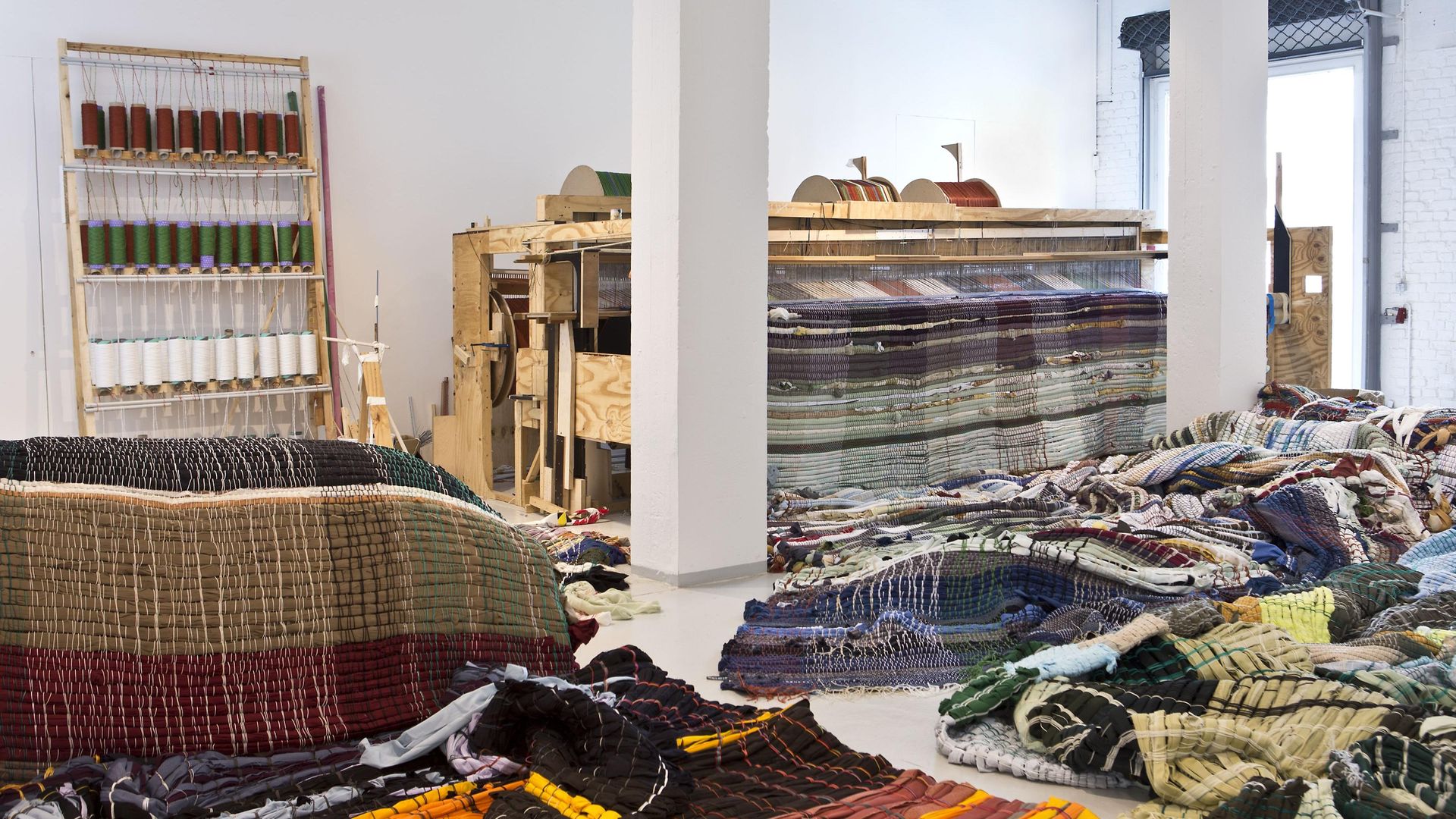

Accompanying program
, 8 pm
Backdoor Fantasies: Opening
Decentralised exhibition in KAI 10 and the following external exhibition spaces
Fassade KAI 10, Rheinseite
Hafenbecken, Nähe Am Handelshafen 4
Courtyard by Marriott, Speditionstraße 11
Vorplatz Hyatt Regency, Julo-Levin-Ufer
TIGGES Rechtsanwälte, Zollhof 8
Grand Bateau, Hammer Straße 13
Bürgerpark, Nähe Parkhaus und Mauerdenkmal
Public Tours of the Exhibition on Saturdays at 3 p.m.
April 4, April 12, May 3, June 7, July 5, August 2, 2014
, 10:30 am – , 1:30 pm
Easter Holiday Program: My House at the Media Harbour - Building a House out of Art
A four-day easter holiday program for children ages 8 to 14.
We will build a large model of the Media Harbour in Dusseldorf
To register, please cal 0211 99434130
Supported by Kunst- und Kulturstiftung der Stadtsparkasse Dusseldorf.
, 7 pm
Symposium in four Acts
SYMPOSIUM IN FOUR ACTS: In conversation with staff members of KAI 10 | Arthena Foundation, experts on art and urbansim lead through the exhibition
April 24, 2014, 7 p.m.: Dr. Söke Dinkla (Director, Lehmbruck Museum Duisburg) and Marion Eisele (Research Assistant, KAI 10)
May 22, 2014, 7 p.m.: Ulla Lux (Cultural Office Dusseldorf) and Julia Schleis (Project Director KAI 10)
June 19, 2014, 7 p.m.: Markus Ambach (Artist and Curator) und Ludwig Seyfarth (Exhibition Curator)
July 17, 2014, 7 p.m.: Mischa Kuball (Artist und Professor for Media Art at the Kunsthochschule für Medien Köln) and Julia Schleis (Project management KAI 10)
, 7 pm
Long night of the Museums
Guided Tours to various stations of the exhibtion at every hour, music and film program at KAI 10.
, 7 pm
Transforming Urban Atmospheres
The lecture by Prof. Dr. Jürgen Hasse (University of Frankfurt/Main) focuses on the city as a social milieu and as a tangible, atmospheric space. Subsequent film program.
, 8 pm
Long night of Performance: Kevin Schmidt Will You Still Love Me Tomorrow?
Will you still love me tomorrow? – With this question Kevin Schmidt adopts the motto "Beyond tomorrow" of the Quadrenniale for his performance for KAI 10. Street musicians of different genres interpret songs selected by the artist, Their lyrics address both the intensity of the moment and the fear of its volatility and its consequences the day after. The feelings sung about – hope, longing, desire and regret – also reflect the character of art events. At the same time, the performance takes up the theme of the exhibition BACKDOOR FANTASIES, which reflects the emotional qualities of the area in the works of art presented in the exterior and interior in Dusseldorf´s media harbour.
In Cooperation with the Embassy of Canada.
.
, 4 pm
Videoscreening ans Live-Concert by Hauschka "ABANDONED CITY"
Raketenstation Hombroich 4 in Neuss (Abraham-Building)
Concert: Saturday, August 9, 2014, 8 p.m.: Tickets available at: KAI 10 | Arthena Foundation, Langen Foundation, Julia Stoschek Collection, Infozentrum der Quadriennale im NRW-Forum
The program starts with a video screening on the topics Ghost Towns – Utopia – Architecture at 4 p.m.. The works on show, by Marina Abramović & Ulay, Monica Bonvicini, Andreas Bunte, Cyprien Gaillard, Manuel Graf, Gordon Matta-Clark, Ben Rivers, John Smith, Weisser Westen, Michael John Whelan and Tobias Zielony, deal with both failed utopias of the modern era and the relationship between human being and architecture.
The evening´s musical highlight is a live concert by German composer and pianist Volker Bertelsmann aka Hauschka (8 p.m.). He will present his new album Abandoned City. Working with a modified piano, the musical performance revolves around the atmosphere of ´ghost cities`. Images and stories about places that were abandoned by their inhabitants due to natural disasters or architectural planning errors served him as a basis for his music scores.
Matching the theme, the Quadrifinale takes place on the Raketenstation Hombroich, a disused NATO-site, which is being transformed into a lively retreat for artists, writers and scientists. The video screening and the Hauschka concert will take place at the so called Abraham-Building, which conceptually is settled between architecture and sculpture. Yet, the building is still unfinished and not used permanently. During the Quadrfinale the building, designed by Raimund Abraham, is assigned to its true destiny as a concert and event venue – in the hope that according to the motto of this year's Quadrennial Dusseldorf Beyond tomorrow in the future it will become a lively place for culture.














